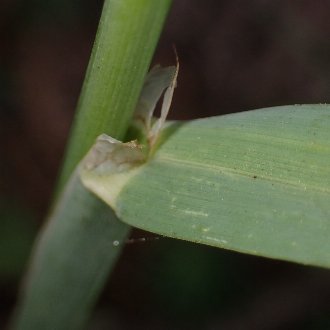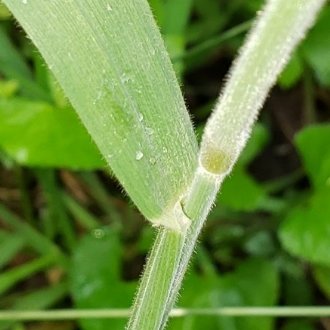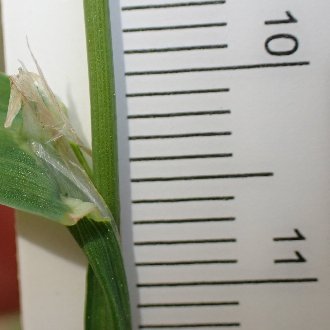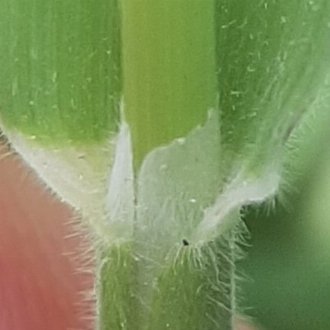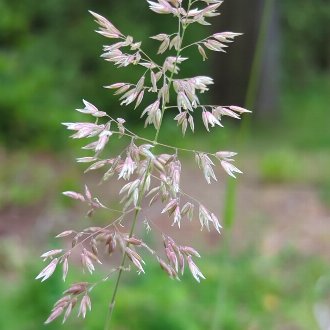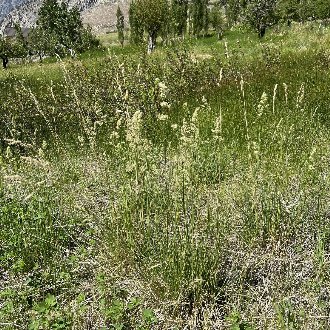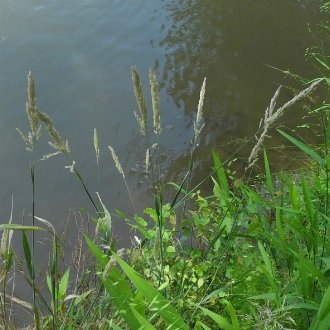Orchard Grass vs Common Velvetgrass
These grasses, both introduced and invasive in North America, are easily confused as they are similar in height, often have bluish foliage, have largely overlapping bloom times. They can be easily distinguished by the presence or absence of pubescence, by their ligules, and by the structure of their inflorescences. Holcus lanatus prefers wetter conditions, benefits more from disturbance, and can be found in wetlands, whereas Dactylis glomeratus ranges farther into the interior of the continent, persist longer in undisturbed habitats, and is not usually found in wetlands but ranges into drier conditions.
Orchard Grass (Dactylis glomerata) | Common Velvetgrass (Holcus lanatus) |
A perennial cool-season bunchgrass, widely planted as a pasture grass, that has become invasive. | A cool-season grass, annual or short-lived perennial, native to Europe and invasive in North America, preferring wet areas. |
Most of the plant is glabrous (without hairs) except leaf blades which are sometimes slightly rough to the touch, especially on their margins. Photo © Sus scrofa, CC BY 4.0. | Much of the plant, including leaf blades, sheaths, and lower internodes, is covered in dense, fine hairs, feeling velvety-soft to the touch. Photo © snail_hiker, CC BY 4.0. |
Ligules (structure extending above where the leaf blade meets the sheath around the stem) average much longer (3-11mm), and often shreds at the tip, looking messy. Photo © John Baur, CC BY 4.0. | Ligules average much shorter (1-4mm), do not shred as much, and usually look neater. Photo © Tyler Ekholm, CC BY 4.0. |
Lower branches of the inflorescence are much wider than those at the midpoint of the inflorescence. Lower branches lack spikelets over most of their length, and lower branches are more widely-spaced than upper branches, leading the top of the inflorescence to look crowded and the bottom sparse and open. Photo © Tim, CC BY 4.0. | Lower branches of the inflorescence are not much wider than those at about the midpoint. Branches are roughly equally spaced in the bottom half of the inflorescence. Spikelets occur quite close to the stem even on the lowest branches of the inflorescence. Photo © John A Haskins, CC BY 4.0. |
Prefers drier habitats. Not commonly found in wetlands, common in mesic conditions and can range into dry habitats. Photo © Steve Matson, CC BY 4.0. | Prefers wetter habitats: can grow in wetlands, and is absent from dry to mesic habitats. Photo © Michael J. Papay, CC BY 4.0. |
References & External Resources
These short lists show only links helpful for ID. For a complete list of references and resources also covering other aspects of ecology, visit the links section of the full article on each plant, which is the first entry here.



